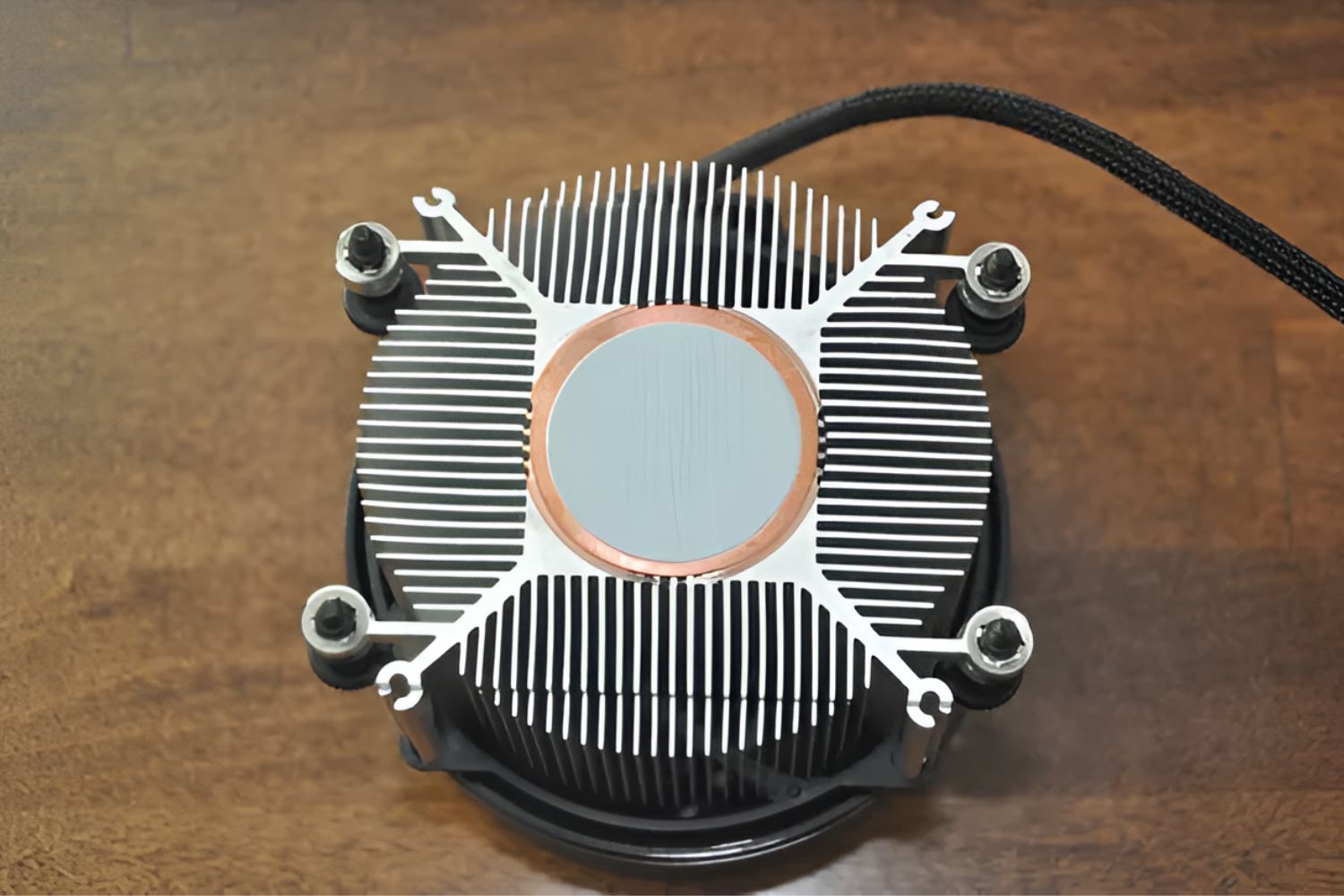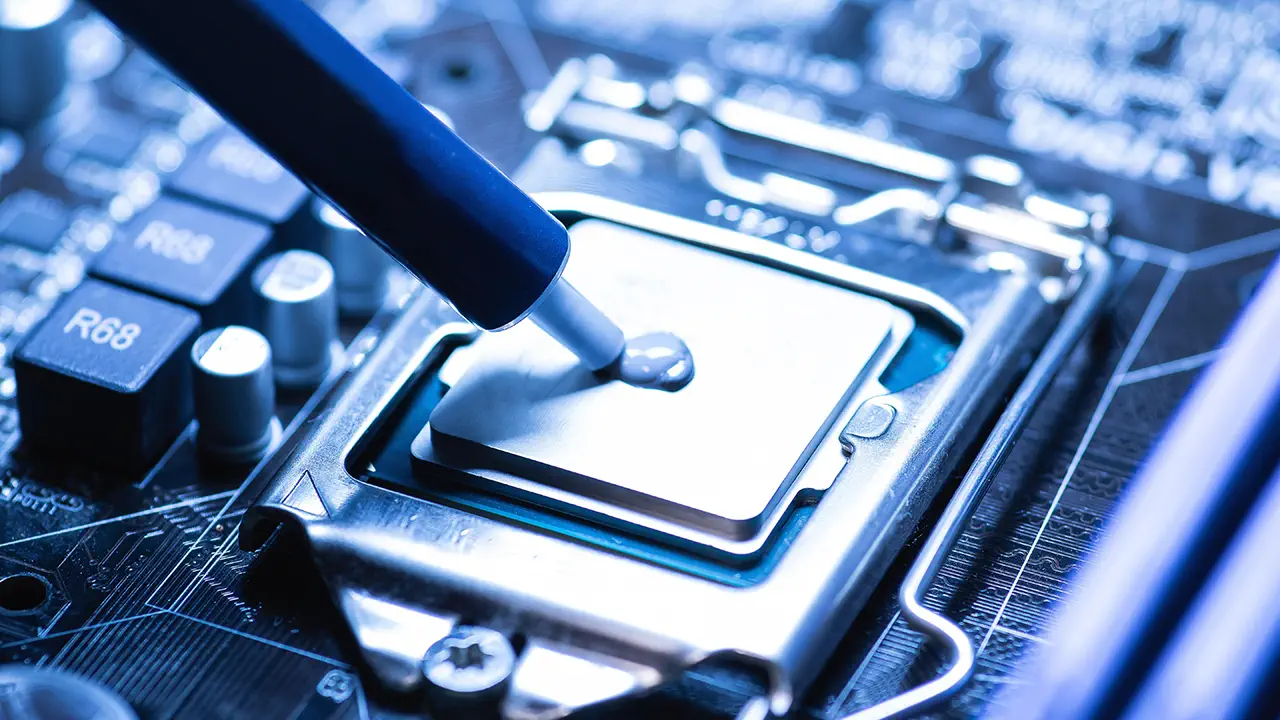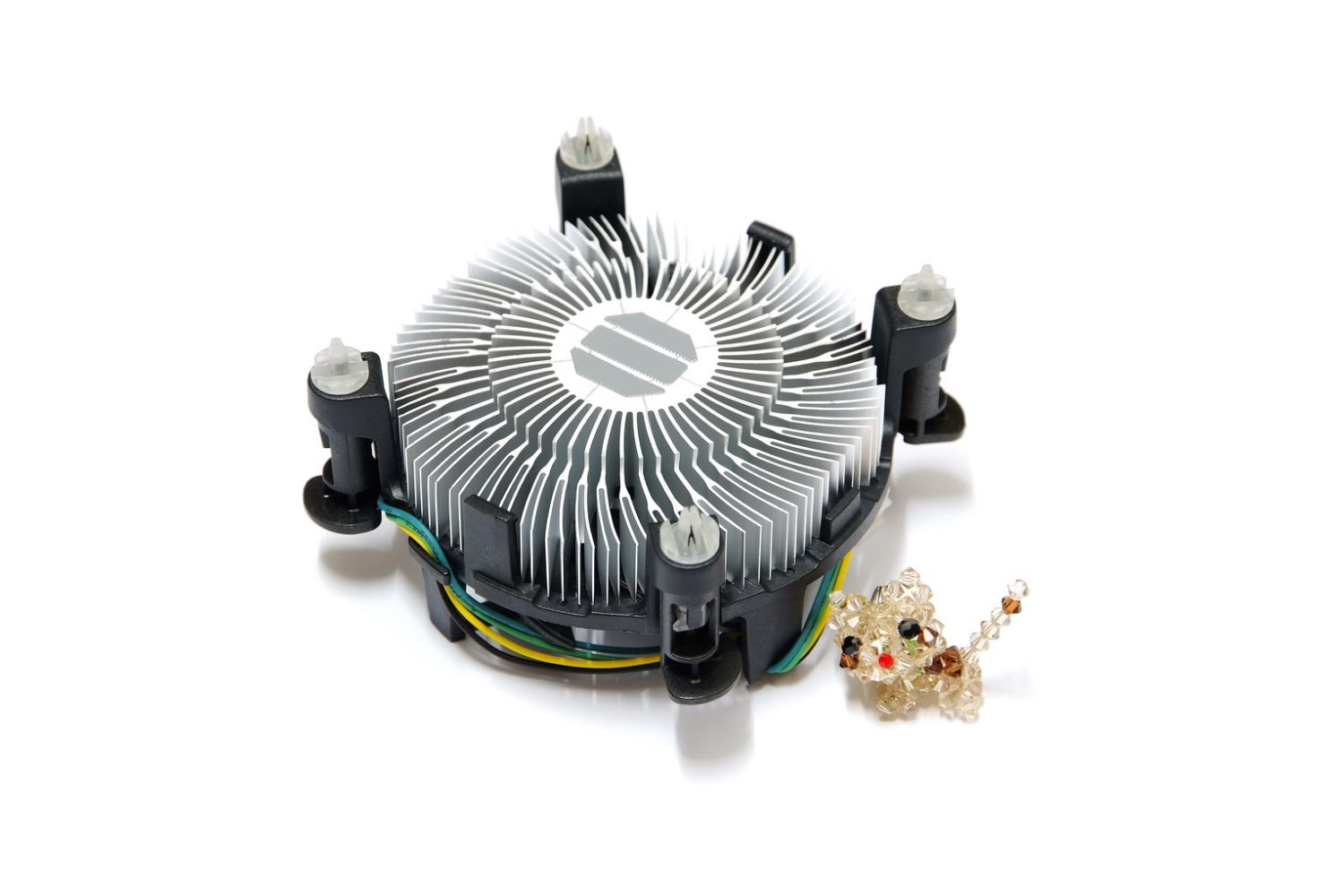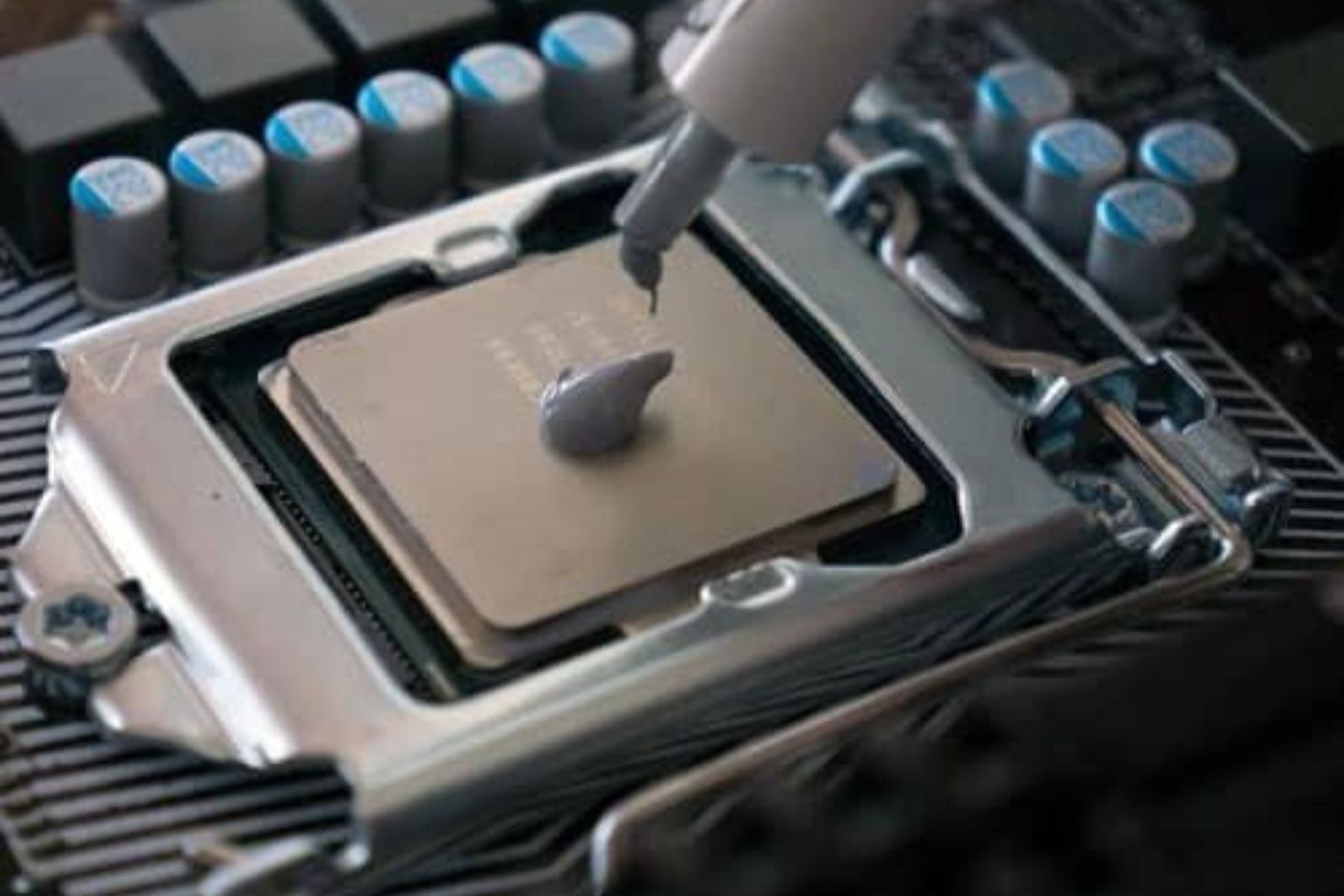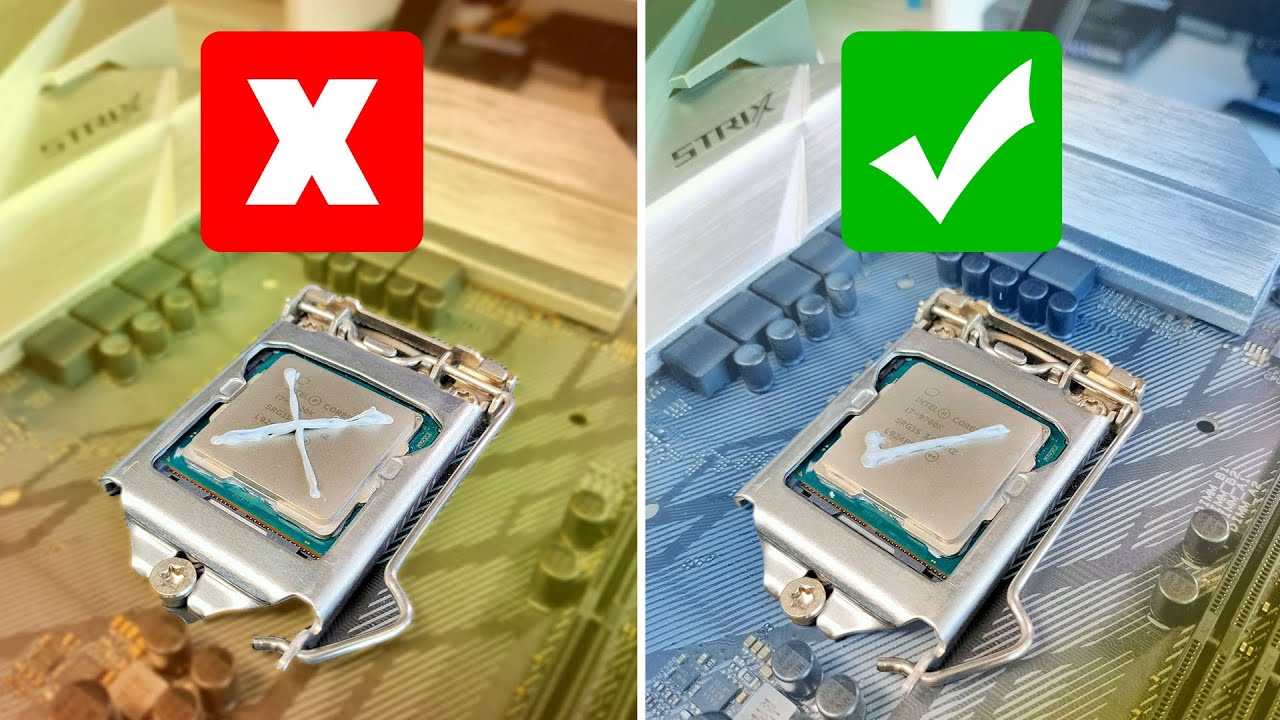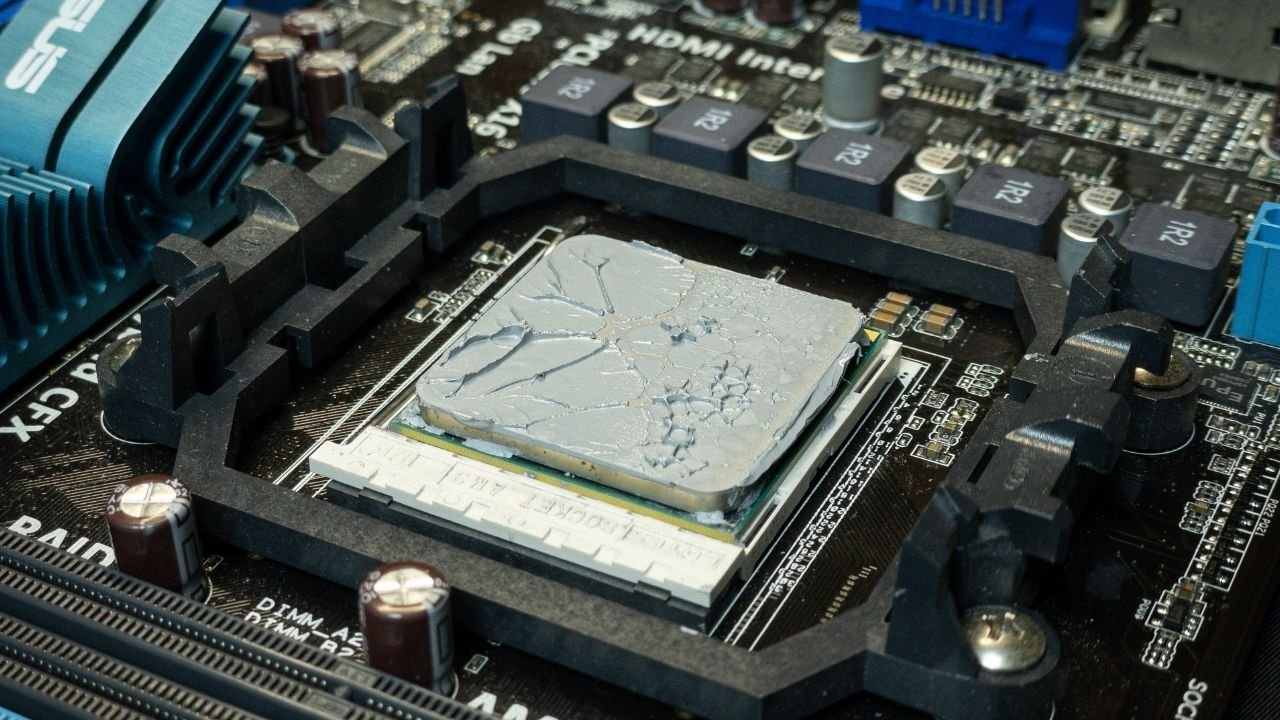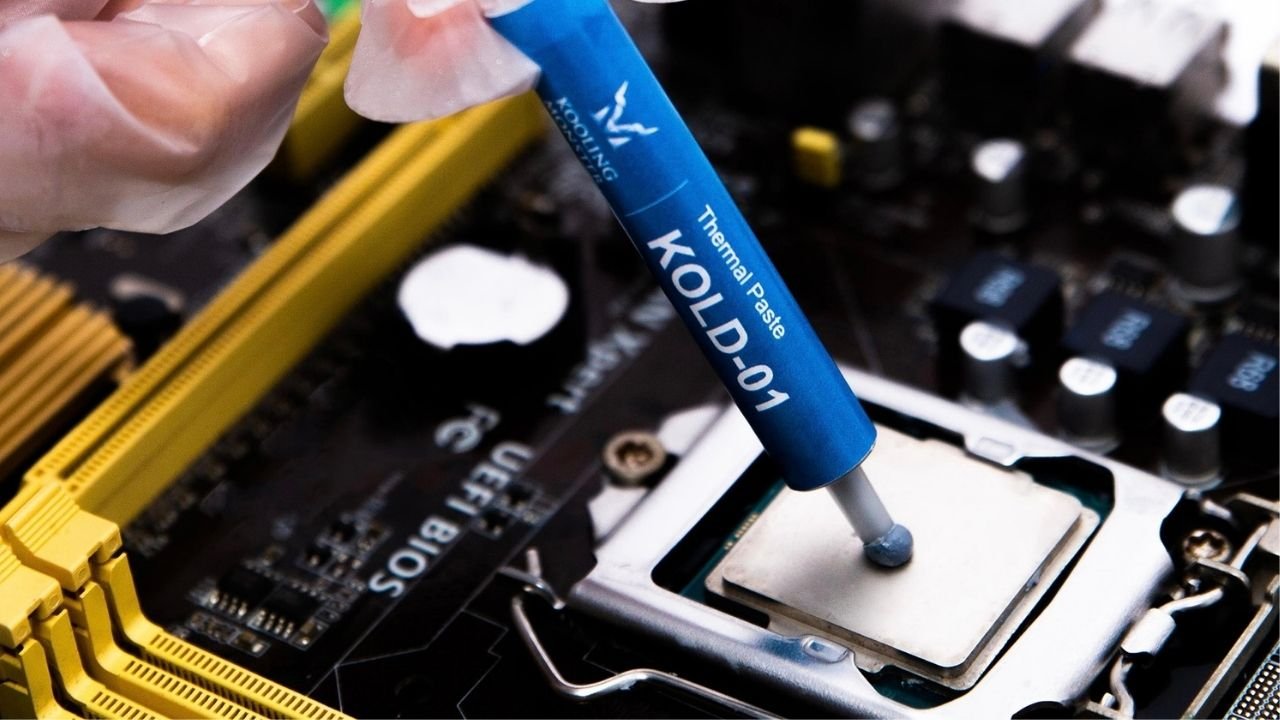Introduction
Whether you’re a seasoned PC builder or a beginner in the world of computer hardware, understanding the role of thermal paste in CPU coolers is crucial. Thermal paste, also known as thermal compound or TIM (thermal interface material), plays a vital role in ensuring optimal heat transfer between the CPU and the cooler, thus preventing overheating and potential damage to your computer’s components.
When you install a CPU cooler, it often comes with a layer of thermal paste pre-applied. However, there may be instances where you need to check if the thermal paste is actually applied or if it needs to be replaced. In this article, we will explore why thermal paste is important, how it works, and provide you with a guide on how to determine if thermal paste has been applied to your CPU cooler.
Without proper heat management, your CPU can reach dangerously high temperatures, negatively affecting its performance and overall lifespan. This is where thermal paste comes into play. Its primary function is to fill in the microscopic imperfections and gaps between the CPU and cooler’s contact surfaces, creating a more efficient heat transfer pathway.
Thermal paste works by eliminating the air gaps or voids that can hinder heat dissipation. The paste’s high thermal conductivity helps bridge the uneven surfaces of the CPU and cooler, ensuring maximum heat transfer. This allows the cooler to effectively absorb and dissipate the heat generated by the CPU, keeping it at a safe operating temperature.
If you’re wondering how to tell if thermal paste is present on your CPU cooler, there are a few signs to look out for. These indicators will help you determine whether or not the thermal paste has been applied correctly and if it is still effective in promoting efficient heat transfer. In the following sections, we will delve into these signs and provide step-by-step instructions on how to check for thermal paste on your CPU cooler.
Why is Thermal Paste Important for CPU Coolers?
Thermal paste is a crucial component in the cooling system of CPUs. Its primary purpose is to improve the thermal conductivity between the CPU and the cooler, ensuring efficient heat dissipation. Without thermal paste, the contact between the CPU and the cooler would be hindered by tiny air gaps, resulting in poor heat transfer and increased operating temperatures.
When a CPU operates, it generates heat. To prevent overheating and potential damage to the CPU, this heat needs to be effectively transferred away from the CPU and dissipated by the cooler. This is where thermal paste comes into play. By filling in the microscopic imperfections on the CPU and cooler surfaces, thermal paste eliminates air gaps and creates a smooth, even contact between the two components.
The thermal conductivity of the paste allows it to efficiently transfer heat from the CPU to the cooler. The paste acts as a bridge, enhancing the contact area and minimizing thermal resistance. With efficient heat transfer, the cooler can effectively absorb the heat from the CPU and dissipate it into the surrounding environment.
Using thermal paste is particularly important when the CPU and cooler have different surface textures. Even minor irregularities can lead to significant reductions in heat transfer efficiency. The paste fills in these gaps, ensuring a more direct and efficient path for heat to flow.
Additionally, thermal paste helps compensate for any small misalignments between the CPU and the cooler. Even with secure mounting, there may be slight variations in the flatness or angle of the CPU and cooler surfaces. The paste helps accommodate these variations and promotes optimal heat transfer regardless of the exact mounting position.
Overall, thermal paste is a critical component in maintaining the longevity and performance of your CPU. It ensures that heat is efficiently transferred from the CPU to the cooler, preventing overheating and potential damage. Without thermal paste, the efficiency of your cooling system could be compromised, leading to higher temperatures and reduced overall system performance.
How Does Thermal Paste Work?
Thermal paste is designed to improve the thermal conductivity between the CPU and the cooler, thereby enhancing heat transfer. It accomplishes this by filling in the microscopic gaps and imperfections on the surfaces of the CPU and cooler.
The primary ingredient in thermal paste is usually a high heat-conductive material such as silver, copper, or ceramic particles. These particles are mixed with a polymer-based substance that helps the paste adhere to the surfaces and maintain its consistency over time.
When applying thermal paste, a thin layer is spread evenly onto the surface of the CPU. As pressure is applied during the installation of the CPU cooler, the paste fills in the microscopic voids and air gaps, creating a more direct contact between the CPU and the cooler.
The thermal paste acts as a bridge between the CPU and cooler, ensuring efficient heat transfer. Its high thermal conductivity helps to minimize the thermal resistance between the two surfaces. By eliminating the air gaps, the paste allows heat to move more easily from the CPU to the cooler.
In simple terms, the thermal paste fills in any irregularities or imperfections on the CPU and cooler surfaces, resulting in a smoother and more direct transfer of heat. This leads to better cooling performance and helps to maintain lower operating temperatures for the CPU.
It’s important to note that thermal paste should be applied sparingly. Too much paste can actually act as an insulator and hinder heat transfer. A small pea-sized or rice grain-sized amount of paste is typically sufficient to cover the CPU surface. The pressure applied during the installation of the cooler will help spread the paste evenly across the CPU.
Over time, the thermal paste may dry out or degrade due to temperature fluctuations and aging. When this happens, it is recommended to remove the old thermal paste and replace it with a fresh layer. This ensures optimal heat transfer and maintains the cooling efficiency of your CPU.
Signs that Thermal Paste is Applied to CPU Cooler
When inspecting your CPU cooler, there are several signs that indicate thermal paste has been applied. These signs are essential in ensuring efficient heat transfer and optimal cooling performance for your CPU. Here are some indicators to look for:
- Visible layer: One of the most apparent signs of thermal paste application is the presence of a thin layer of paste between the CPU and the cooler. It should be evenly spread, covering the entire contact area of the CPU surface.
- Smooth and uniform appearance: The thermal paste layer should have a smooth and consistent texture across the CPU surface. If there are any gaps or uneven areas, it may indicate an improper application or insufficient amount of thermal paste.
- Slight spreading: When installing the CPU cooler, you may notice a slight spreading of the thermal paste as pressure is applied. This is normal and helps to ensure an even distribution of the paste across the CPU surface.
- No air bubbles: Air bubbles trapped in the layer of thermal paste can hinder heat transfer. If you observe any visible air bubbles in the paste, it may be an indication of an improper application or low-quality thermal paste.
- Consistent contact pattern: After removing the CPU cooler, you can check for a consistent contact pattern on the thermal paste. Ideally, the contact pattern should be uniform, indicating that the paste has evenly spread between the CPU and the cooler.
- No excessive paste overflow: The thermal paste should not overflow beyond the edges of the CPU. Excessive paste can lead to poor heat transfer and potentially cause damage to other components if it comes into contact with them.
It’s important to note that the absence of any of these signs does not necessarily mean thermal paste is not applied. However, for optimal cooling efficiency, it is recommended to ensure that these signs are present to maintain a proper connection between the CPU and the cooler.
Regularly checking the condition of the thermal paste and ensuring its proper application is essential for efficient heat dissipation and optimal performance of your CPU.
How to Check if Thermal Paste is Applied to CPU Cooler
If you’re unsure whether thermal paste has been applied to your CPU cooler or if you want to verify its presence, there are a few steps you can follow to check. Here’s a simple guide on how to determine if thermal paste is applied to your CPU cooler:
- Prepare your workstation: Before starting, ensure you have a clean and well-lit workspace. Also, make sure you have thermal paste on hand in case you need to apply or reapply it.
- Power down and disconnect: Shut down your computer and disconnect all power sources, ensuring you’re working on a static-free surface.
- Remove the CPU cooler: Carefully remove the CPU cooler from the CPU socket by loosening the screws or detaching the mounting mechanism, depending on the type of cooler you have.
- Inspect the cooler base: Examine the base of the cooler, where it makes contact with the CPU. Look for a thin layer of thermal paste applied to the base. The paste should cover the entire contact area evenly.
- Check the CPU surface: After inspecting the cooler base, carefully lift the CPU out of the socket and examine its surface. Look for any residue or traces of thermal paste on the CPU. If thermal paste is present on the CPU surface, it indicates that it was applied during installation.
- Assess the paste condition: Pay attention to the quality and condition of the thermal paste. It should be smooth, without any signs of drying, cracking, or separation. If the paste appears dry or degraded, it may need to be replaced.
- Clean and reapply if necessary: If you find that thermal paste is not applied or if it is in poor condition, clean the CPU and cooler surfaces using isopropyl alcohol. Then, apply a small amount of fresh thermal paste to the CPU’s center and reattach the cooler, ensuring proper mounting pressure.
- Reconnect and test: Once you have reinstalled the CPU cooler, reconnect all the necessary cables and power sources. Power on the computer and monitor the CPU temperatures to ensure that the thermal paste is effectively transferring heat.
By following these steps, you can easily check if thermal paste is applied to your CPU cooler and take appropriate action if necessary. Regularly inspecting and maintaining the thermal interface is important for optimal heat dissipation and overall system performance.
What to Do if Thermal Paste is Not Applied to CPU Cooler
If you discover that thermal paste has not been applied to your CPU cooler during inspection, don’t worry. It’s essential to take the necessary steps to ensure proper heat transfer and prevent potential damage to your CPU. Here’s what you should do if thermal paste is not applied to your CPU cooler:
- Clean the surfaces: Begin by gently cleaning the CPU and cooler surfaces using isopropyl alcohol and lint-free cloth or cotton pads. Make sure to remove any existing residue from previous thermal paste applications.
- Apply thermal paste: Once the surfaces are clean and dry, apply a small amount of thermal paste onto the center of the CPU. The size of a pea or a grain of rice is sufficient for most CPUs.
- Spread the thermal paste: Carefully reattach the CPU cooler, ensuring proper alignment and mounting pressure. As you secure the cooler, the paste will spread out evenly between the CPU and the cooler base. Avoid applying excessive pressure that can cause the paste to overflow.
- Verify contact: After securing the cooler, double-check to ensure that the paste has spread evenly and there are no visible gaps or air bubbles. The contact should feel secure and evenly distributed.
- Monitor temperatures: Power on your computer and monitor the CPU temperatures to ensure that the newly applied thermal paste is effectively transferring heat. Keep an eye on the temperatures during normal usage and under heavy loads to confirm that the cooling system is functioning optimally.
If you’re unsure about the correct method for applying thermal paste or need guidance in selecting the appropriate type of paste for your CPU, it’s recommended to consult the manufacturer’s guidelines or seek assistance from reputable sources.
Regularly check the condition of the thermal paste and ensure its proper application to maintain optimal heat transfer and prevent any potential issues with CPU temperatures. By following these steps, you can address the absence of thermal paste and ensure that your CPU cooler functions efficiently.
Conclusion
Thermal paste plays a critical role in maintaining the optimal performance of your CPU cooler. It bridges the microscopic gaps between the CPU and cooler, improving heat transfer and preventing overheating. Through its high thermal conductivity, it ensures that heat is efficiently dissipated, keeping your CPU operating at safe temperatures.
In this article, we discussed the importance of thermal paste for CPU coolers and how it works. We explored the signs that indicate the application of thermal paste, as well as the steps to check if thermal paste is applied to your CPU cooler. We also provided guidance on what to do if thermal paste is not found or needs to be reapplied.
Regularly checking the condition of thermal paste and ensuring its proper application is essential for maintaining optimal cooling efficiency. Over time, thermal paste may dry out or degrade, so it’s important to replace it when necessary to ensure effective heat transfer.
By following the guidelines provided in this article, you can ensure that your CPU cooler is equipped with thermal paste and that it is working efficiently. Proper thermal paste application and maintenance will help extend the lifespan of your CPU and maintain its performance, ultimately contributing to a stable and reliable computing experience.
Remember to consult your CPU and cooler manufacturer’s guidelines for specific instructions on thermal paste application and to select the appropriate type of thermal paste for your system. With proper care and attention to thermal management, you can enjoy optimal cooling performance and peace of mind in your computing endeavors.







